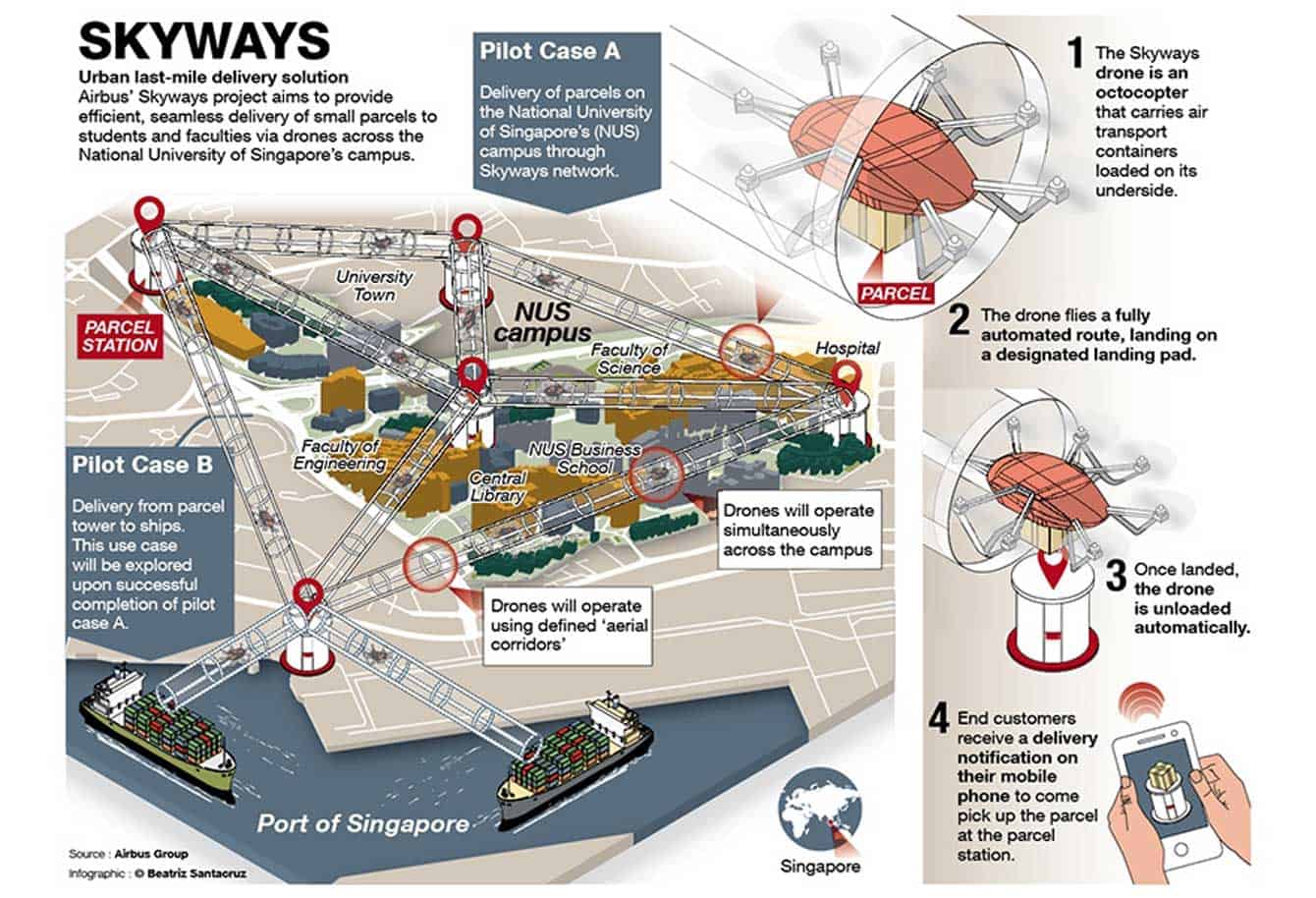Airbus have announced the unthinkable and stated their desire to introduce flying taxis within five years.
Uber recently introduced the revolutionary concept of driverless cabs. Lucky residents of Pittsburgh enjoyed free rides all over town as the multinational transport network company tests the waters for how autonomous cabs will fare in the real world.
It is truly an exciting time for technological advancements, especially in the transport sector. But if Airbus achieves their vision, Uber will be blown out of the water – possibly as early as 2021. Even though Uber does have a few ideas up their sleeve too, such as an Uber Air - a shared flight option planned to be available from 2023.
Airbus have announced the unthinkable and stated their desire to introduce flying taxis. As crazy as it might sound, the idea has been put forward by a subdivision of the aerospace and defense corporation named A3. They are responsible for creating innovative ideas and, based on this latest development, they’re certainly delivering.
It all starts in Silicon Valley
It will come as no surprise to learn that A3 is located in Silicon Valley, California’s breeding ground for ambitious, ground-breaking tech companies that aren’t afraid to disturb the status quo. Their latest design would be completely autonomous, requiring no driver and hailed using a traditional smartphone app. Customers would open the app and order the flying taxi to their front door before being whisked off to their next destination without the need to tackle rush hour traffic.
Cab sharing would be encouraged to keep costs to a minimum, and remarkably early predictions state that it would effectively be “a more affordable autonomous ferry service closer to modern public transit options.”

Given the number of ideas that don’t take off, it would be easy to dismiss this as just another marketing gimmick. It is not unknown for companies to announce far fetched ideas to drum up publicity before quietly removing all funding. With this project, however, the first notable milestone is very much in sight.
Tests and Prototypes
Airbus have stated their intention to have the first prototypes up and running as early as next year. Tests have already been approved at Singapore’s National University, although it is currently illegal to test the required remote flights outdoors. Instead, test flights will be conducted in a contained environment that will look to demonstrate the plausibility of the vehicles being used in the real world at a later date.

With so many challenges to overcome and a massive chasm between current technology and what is being discussed, why the rush? Well, Airbus may have had their hand forced by competing companies. The 2016 Consumer Electronics Show (CES) saw the introduction of the innovative EHang 184. The drone designer’s latest project is a one-seater drone capable of flying at 60 mph running on just electricity. Talk at CES 2016 mainly revolved around owning the 184, but it’s easy to see how quickly the transition to a taxi service could be made.

Making Way for Drones
Indeed, drones are becoming increasingly prominent in our lives and have been for some time. No longer restricted to our national defenses, drones have slowly found their way into mainstream culture and many individuals now own their own, private drones. Leading online retailer Amazon is really investing in this type of air mobility. Having announced their Amazon Prime Air initiative way back in 2013, the company has found solace in the United Kingdom after US laws prohibited it from exploring the potential of drones to the extent that Amazon required.
Hundreds of millions of dollars have reportedly been invested into the scheme, backed heavily by Amazon’s Chief Executive Jeff Bezos, who also happens to be the founder of aerospace manufacturer and spaceflight services company Blue Origin.
Reducing Traffic Congestion
One of the primary reasons behind Airbus pursuing this avenue so aggressively is down to increasing traffic in a number of major towns. Rush hour traffic is already unbearable in cities like Los Angeles, New York, and London, and the problem is only set to worsen in the near future. By the year 2030, it is predicted that a massive 60% of the world’s population will be living in city areas, by which time we can logically expect congestion to be far more severe.
These flying taxis – currently being labeled CityAirbus by the company – will massively reduce congestion almost overnight. By allowing vehicles to fly above ground level, cities will feel the same benefits of adding lane after lane to their roads with none of the time or expenditure that usually comes with the territory.
These sentiments are echoed by Airbus CEO Tom Enders, who acknowledged that although it sounds far fetched now, it could soon become just another part of our daily lives:
‘It’s not crazy to imagine that one day our big cities will have flying cars making their way along roads in the sky,’ said Mr. Enders.
Opportunities and Threats
It’s not that simple, though. One of the major obstacles that the company has yet to overcome is to invent a fully capable avoidance system which would ensure the drones never crash into objects, buildings or one another. Considering that the equivalent technology in cars is still being perfected, it is difficult to imagine that the technology would be mastered in time for a 2021 launch.
Also the maintenance costs of the air taxis will be huge, and landing pads will be needed to be added to buildings and other infrastructure as these flying cars won't be able to land on any back yard or middle of the street. It will take test flight after test flight to finally develop an ideal solution, but Airbus and Uber are getting close.
Whilst we may not be jetting around in autonomous air cabs as soon as Tom Enders would like, the finish line is certainly on the horizon.








